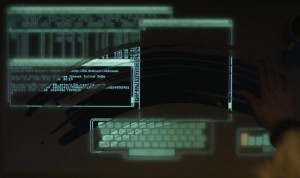
Why is the infrastructure of countries like Iran under attack, they have been infected with a computer virus that supposedly originated from Israel. This is part of the cyber-terrorism spectre that is looming over the Internet. Firstly they had the Stuxnet virus, that was programmed to attack centrifuges for refining uranium and now this new virus has been created that can even leech data from a smart-phone placed near the computer over Bluetooth. The size of the virus is many orders of magnitude greater than the Stuxnet virus due to the greater capabilities it has. Software based on the capabilities of this software would be incredible, but it is used for cyber-warfare instead of the software being used to create a piece of software that would make syncing a mobile telephone with your computer easier. In the television show Prison Break they had a device that when it was placed next to a computer hard drive it could copy all of the data from the hard drive wirelessly. I am not sure how that would work in reality but the Stuxnet software had that capability of sorts. The future of warfare is involving the Internet and powerful Malware that will be targeted to foreign computers to steal information and interfere with the workings of equipment that is controlled by those computers. This will require foreign governments such as Iran and Syria to adapt greater security measures to avoid further security breaches.
The Gillard government in Australia have had security issues, due to their use of Windows operating systems instead of more secure options like Linux or BSD. Not that an Australian government would be in a hurry to adopt something more secure like BSD if they are happy with Windows. Many businesses are still using Microsoft Windows XP instead of the more reliable and secure Windows 7. But it is hard to migrate all of your users and specialized software to a newer version of Windows. It will be a long time before any business is using Windows 8, that abominably ugly operating system should be shelved and Microsoft should just concentrate on another service pack for Windows 7 instead. That would make some sense, Windows 7 is the Windows that XP should have been. No wonder that users are installing Ubuntu or Linux Mint instead, the Linux distributions available today are very secure and reliable; there are no virus issues, and if you make flash usage limited and install Noscript, Ghostery and Adblocking for Firefox to protect against web tracking and Adobe flash Malware then you will be pretty safe on the Internet. Do not use a browser like Google Chrome, that browser sends user data back to Google, use Firefox or Midori instead, if you must use the features of Google Chrome, use Chromium instead, that will still work with Google.
The closed-source Opera browser is another good choice on Linux, I prefer it over Chrome. What data about you is Google Chrome sending to Google? Someone needs to setup their computer with a logging program and run Google Chrome and see what traffic is actually sent over the wires and that could shed some light on this whole Google Chrome botnet mystery. My older posting about this situation was a pretty good posting, but I wanted to mention this again. http://www.securitronlinux.com/uncategorized/google-chrome-botnet-fact-or-fiction/. This needs to be investigated by someone with networking knowledge to help explain what is going on. Firefox is a worthwhile web browser, the massive amount of add-ons available for just about any need make it very useful these days. In the old days of the web you would use Netscape Navigator 4, that was limited but it did work, Internet Explorer 4 was not so good in comparison. Internet Explorer 6 was no better considering the amount of security holes in that browser. Many businesses still run the Internet Explorer 6 browser on Windows XP, many have no choice, sure Firefox is better, but usage is not universal over the world. At least we are no longer restricted to the use of Microsoft software.

Open-source Linux and UNIX operating systems are thankfully prevalent all around the world and the associated presence of free and open-source web browsers allows paranoid users to read the source code and see what the browser is really up to. The Google Chrome web browser has the Chromium browser as an alternative, the source code for that browser is available and this makes it a better alternative than Chrome. Chromium is compatible with the Google sync service allowing you to sync bookmarks and extensions between computers. Very useful indeed. The Dolphin browser for Android also allows you to sync with your Google account, the Android operating system of course is linked to your Google account and you may sync data between devices easily. In the early days of DOS machines we had to sync data with 1.44 megabyte capacity floppy disks to share data between computers. Once I had to copy data between a Windows ’98 desktop computer and a Windows ’95 laptop and I copied the data across with a parallel port cable by connecting it to each machine via the printer port and copying the data that way. That type of data connection is not something that you see these days at all. With easy Ethernet networking, you would not need that anymore. But that is what computer users did in the old days to network our machines.
The days of Windows ’95 and Windows ’98 are thankfully behind us, I tried out the Windows 8 Consumer Preview and that is where computer interfaces are headed these days sadly. Windows ’95 had a very good interface, despite the simple icons, the interface in Windows 8 is just too painful to use. Better to use Linux Mint with MATE or Cinnamon; those two desktops are far better than the Windows 8 Metro interface that looks horrid. An LCARS theme for Metro would be better, the trekkies like me would love a Star Trek styled interface on a tablet computer that would replicate the look of a PADD as faithfully as possible. There is a LCARS interface in the works for Linux, but I am not sure how usable it is: http://www.trekbbs.com/showthread.php?p=4065692. A tiling window manager like AwesomeWM could be a good base.
1 thought on “Stuxnet virus and open-source software security compared to closed source software options.”